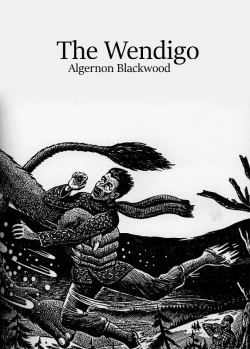
 Title: The Wendigo
Title: The WendigoAuthor: Algernon Blackwood
Publisher: Public Domain
First Published: January 1, 1910
Pages: 50
Genres: Classics, Horror, Paranormal
Format: Ebook
Source: Free, Public Domain
Rating: ★★★½

Synopsis:
The Wendigo is an influential horror novella by Algernon Blackwood, which was first published in a collected fiction book called The Lost Valley and Other Stories, in 1910. The story follows a doctor, his nephew, and their party on a moose hunting trip into the deepest wilderness of northern Canada. Things take a turn as the party split up and one begins to follow non-human tracks...
My Review:
Wendigos are some of the most terrifying specters of Algonquin folklore, a malevolent spirit that is often associated with winter, starvation, cannibalism, and death. The Wendigo reads like a campfire ghost story told around hunting circles about the unexplainable phenomena that can only be experienced in the farthest reaches from civilization.
The story follows a moose-hunting party on their trek into the woods near the end of the fall season. The untamed wilderness leaves the hunters struck with awe at the beauty and terrible loneliness of the Candian wilderness. The writing is a master craft of atmosphere, as the adventure displays the majesty of nature and the ever-powerful call that it has on the hearts and minds of men. The terrifying silence of the natural world feels oppressive, feeling like a monster that swallows up the hunting camp.
The one glaring issue that holds this classic down is the casual racism that is used to describe character traits. While understandable for the time period in which it was written, it is archaic and simply unpleasant to read. A blemish on an otherwise superbly written story, a terrible shame really.
Even so, this book stands as a classic that brought a part of First Nations folklore into the literary canon and influenced other horror writers and filmmakers in the decades after it was written. The Wendigo is a testament that the unseen horror can be just as effective without the excessive blood and gore of more contemporary fiction. A true delight for the senses as the tightly written prose evokes both fear and wonder in readers for generations.
“Men were sometimes stricken with a strange fever of the wilderness, when the seduction of the uninhabited wastes caught them so fiercely that they went forth, half fascinated, half deluded, to their death.”
Trigger Warning: Racism, Violence